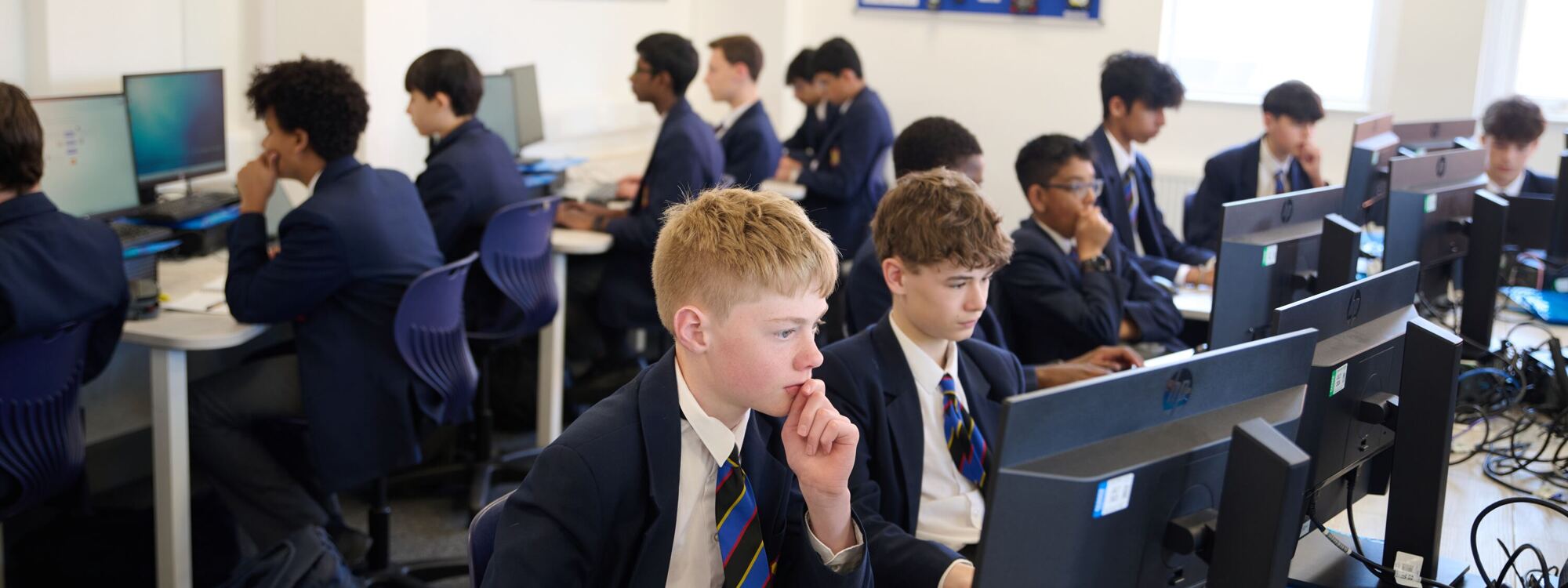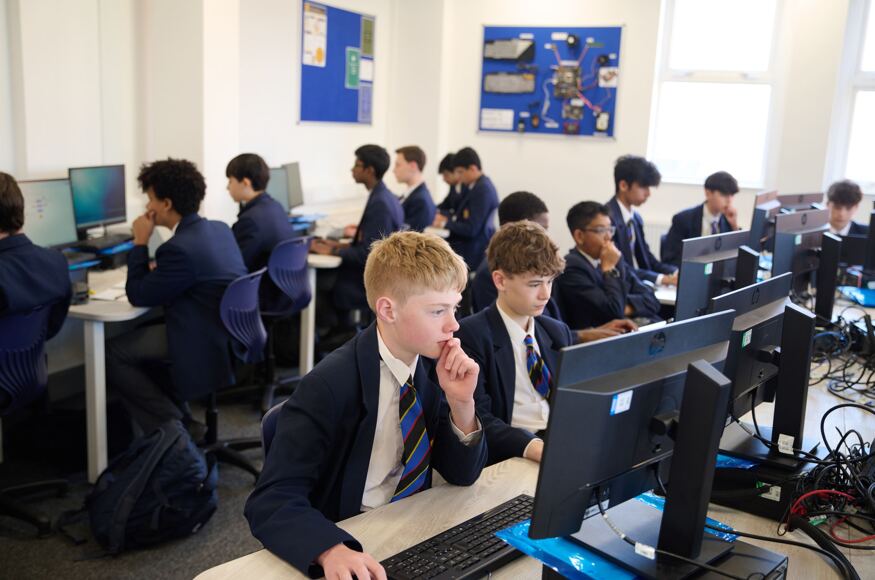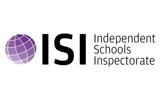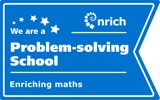
- Home
- News and Events
- Teaching and Learning Blogs
- Tech, Schools and the Future
Tech, Schools and the Future

The Tech, Schools, and the Future Conference is an annual event that brings together educators, technologists, and thought leaders to explore the intersection of technology and education. This year, the conference was held at the City of London School, offering a unique opportunity to delve into the profound effects of technological advancements on teaching, learning, and the overall school environment. Below, I share my reflections on the keynotes and workshops that stood out to me.
‘Teaching and Learning in the Age of AI' – Tom Chatfield
Key questions to think about when using AI in learning
Dr Tom Chatfield’s keynote, Teaching and Learning in the Age of AI, was a thought-provoking way to open the conference. He reminded us that while AI can be incredibly powerful, it still comes with significant limitations. Yes, it can process and analyse vast amounts of information—but it lacks true understanding, lived experience, and the nuance that only humans bring. That’s why human oversight isn’t just helpful—it’s essential.
Chatfield encouraged us to think differently about our roles as educators. He spoke about the ongoing shift from simply creating content to engaging in deeper critical analysis. More importantly, he stressed the value of questioning AI-generated outputs, which can sometimes be biased or flat-out incorrect. He calls for educators to stay curious and informed about AI’s evolving role in our field. Rather than seeing it as a threat, we’re encouraged to embrace AI as a supportive tool—one that should complement, not replace, human expertise. This balanced, reflective approach is what will allow us to harness AI in ways that genuinely enhance teaching and learning. These are the sentiments echoed in the World Economic Forum’s Future of Jobs Report, which explained that AI is more likely to augment, rather than replace jobs.
Further reading:
This white paper by Tom Chatfield explores the vital and ongoing role of human skills in an increasingly AI-saturated world within the specific context of business schools equipping their students with the critical, collaborative, and ethical skills needed to navigate an increasingly complex AI age with confidence.
Here are some helpful AI resources and tips:
- How to use Kahoot AI tools
- Practical Tips for Teachers to Use AI
- Book of Generative AI prompts for teachers
Just a gentle reminder of the following:
- From September, pupils in the Third Form and above will be able to use generative AI tools that are age-appropriate for 13+, such as ChatGPT and Perplexity. This follows a recent update to our Acceptable Use of IT policy, which will come into effect next year.
- From September, parental consent will be in place for pupils aged 13 and over, so those in the Third Form and above may use these tools. Pupils in the Lower School will remain restricted due to age requirements.
- Please note that (for now!) pupils must not use Copilot, as it is currently intended for users aged 18 and over—this will remain the case until Microsoft updates the age restrictions, which we hope will be in September.
- Both staff and pupils should not enter any personal data when using any AI tools—privacy and digital responsibility remain essential.
AI & Instructions: Supercharging Rosenshine’s Principles of Instruction - Jo Hughes
One session that really stood out for me was the workshop: AI & Instruction: Supercharging Rosenshine’s Principles of Instruction. It offered a fresh take on how technology - particularly generative AI - can work hand-in-hand with Rosenshine’s framework to support both teachers and learners.
What Are Rosenshine’s Principles of Instruction?
Barak Rosenshine’s Principles of Instruction are a collection of tried-and-tested teaching strategies, all rooted in research and real classroom experience. They focus on the power of well-structured lessons, regular review, and guided practice—things many teachers already do instinctively, but which Rosenshine helps bring into sharper focus. If you’re curious to dig a little deeper, I’d really recommend taking a look at the summary here. It’s a practical and insightful read, offering plenty of ideas that can make a real difference to day-to-day teaching.
The 10 Principles of Instruction
-
Start with a review – A quick recap of previous learning helps students strengthen their memory and make connections.
-
Introduce new material in small steps – Too much information at once can overwhelm students. Breaking it down makes it easier to digest.
-
Ask lots of questions – The more students engage in thinking and answering, the deeper their understanding.
-
Provide models – Worked examples and step-by-step demonstrations make learning clearer.
-
Guide student practice – Learning doesn’t happen instantly. Giving students structured practice ensures they grasp concepts before working independently.
-
Check for understanding – Regularly assess whether students are keeping up, and address any gaps early.
-
Aim for a high success rate – Research suggests that students should get around 80% of questions right before moving on to new content.
-
Offer scaffolding – Provide support, such as hints and prompts, and gradually reduce them as students gain confidence.
-
Encourage independent practice – Once students understand a concept, they need time to practise on their own to reinforce learning.
-
Review learning regularly – Spaced repetition—weekly and monthly reviews—helps students retain information long-term.
Breathing New Life into Rosenshine with AI
What I found most powerful was how AI tools can help lighten the load: generating quick quizzes for retrieval practice, creating scaffolded questions based on Bloom’s Taxonomy, or building interactive tasks that meet different learning needs. These aren't abstract ideas—they’re real, practical things we can use to save time and sharpen our teaching. The session also highlighted how AI isn’t about replacing teachers—it’s about freeing up time to do more of what really matters. By automating some of the admin-heavy tasks, we get more space to focus on connection, creativity, and meaningful learning experiences. Teaching has always been a blend of art and science. Rosenshine’s work gives us a strong, research-backed foundation—but it’s how we bring those principles to life in our own unique classrooms that really makes the difference. With thoughtful use of tools like AI, we can continue to evolve our practice while staying grounded in what we know works best for learners.
Rosenshine's Principles of Instruction, courtesy of Jamie Clark
Practical Applications of AI
AI can play a significant role in supercharging Rosenshine’s Principles of Instruction. Here are some examples:
- 📠Daily Review: AI can generate quick quizzes to reinforce prior learning. See: https://www.aiforeducation.io/prompts/blooms-taxonomy
- 📚 New Material in Small Steps: AI-assisted scaffolding helps break complex topics into manageable parts.
- â“ Ask Questions: AI can create Bloom’s Taxonomy-based questions to assess understanding.
- ðŸ–‹ï¸ Provide Models: AI can generate sample answers to illustrate concepts.
- 🧩 Guide Student Practice: AI can create interactive exercises tailored to different learning needs.
- ✅ Check Student Understanding: AI tools assist in generating formative assessment questions.
- 📈 Obtain High Success Rate: AI can personalize learning by adapting materials based on student progress.
- ðŸ› ï¸ Scaffolds for Difficult Tasks: AI supports differentiation, providing step-by-step guides for struggling students.
- ðŸ‹ï¸ Independent Practice: AI-generated practice activities reinforce learning.
- 🔄 Weekly and Monthly Review: AI tools help automate spaced repetition through quizzes and summaries.
The following link contains a prompt for each of the 10 principles for you to try: Rosenshine’s Principles of AI Instruction
Digital Pedagogy - Henry Exham
The Digital Pedagogy workshop gave me a lot to think about. It explored the realities of integrating digital tools into the classroom, touching on the opportunities and challenges we face. Issues like managing devices, keeping students safe online, and ensuring staff have the right training were all discussed. These are the day-to-day challenges that need to be addressed for digital education to truly succeed. What really struck me was the emphasis on having a clear digital vision. It’s easy to get caught up in the excitement of new technology, but it’s not just about jumping on the latest trend—it’s about having a plan that aligns with the values and goals of the school. For that plan to succeed, collaboration is key. Getting everyone involved and ensuring there’s ongoing evaluation of the tools we use helps us stay on track.
The part of the workshop that resonated most with me was about balancing flexibility with consistency. Schools at different stages of digital adoption face unique challenges, so finding a balance that works for each one is crucial. But above all, the workshop reminded me that engaging staff with technology isn’t something that happens overnight. It’s about providing continuous support and creating a culture where teachers feel confident using new tools to enhance their teaching.
Further reading:
What We're Doing at Our School
As part of our digital strategy, we're taking proactive steps to embed technology in meaningful ways across the school:
- Digital Reps – We've established a network of digital representatives, creating a collaborative space for staff to share good practice, explore new tools, and support each other in using technology effectively.
- AI Steering Group – This cross-departmental team is developing an AI curriculum that is both responsible and relevant, ensuring our pupils gain essential skills for the future.
- Digital Learning Assessment Report – We've completed a thorough review of our digital learning practices, identifying key outcomes and setting clear actions for ongoing improvement.
-
Digital Leaders Haileybury Group – We were proud to have hosted this year’s Haileybury Group event, bringing together digital leaders from other schools for a day of inspiration, collaboration, and knowledge-sharing.
Smartphones and Social Media: Reclaiming Childhood - Hannah Oertel
This talk on Smartphones and Social Media: Reclaiming Childhood explored the impact digital devices have on teenagers' health, mental well-being, and social behaviours. Hannah discussed the physical and mental health issues associated with excessive smartphone use, such as poor eyesight, disrupted sleep, and increased anxiety. She advocated for a balanced approach, which included delaying access to smartphones, educating children about digital risks, and enforcing phone bans in schools. The call to action for parents, schools, and policymakers to help create healthier digital habits resonated deeply with the audience.
Final Thoughts
Overall, the Tech, Schools, and the Future Conference was an enriching experience. It reinforced the importance of staying informed about technological advancements and adopting a balanced approach to integrating AI and digital tools in education. While there is still much to learn and explore, the practical examples and strategies shared at the conference will undoubtedly influence my approach to technology in education moving forward.











